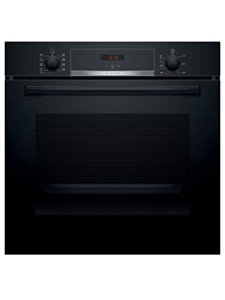The Rise of Built-In Ovens: A Seamless Approach to Modern Cooking
In modern cooking areas, where design looks blend effortlessly with functionality, one device stands out as a true video game changer: the built-in oven. As homeowners and chefs alike continue to seek ingenious services that enhance their cooking experience, built-in ovens have actually become increasingly popular. This post checks out the advantages, considerations, and patterns surrounding built-in ovens, highlighting why they are an essential feature in modern-day cooking areas.
What is a Built-In Oven?
A built-in oven is a kitchen area home appliance developed to be integrated into the cabinetry of a kitchen instead of standing alone. Unlike conventional freestanding ovens, which can be moved and placed anywhere, built-in ovens come in various styles and sizes to fit specifically within designated areas. Available in single or double configurations, these ovens offer a streamlined appearance that matches modern kitchen area designs.
Advantages of Built-In Ovens
1. Space-Saving Design
One of the most appealing benefits of built-in ovens is their space-saving style. By incorporating the oven into cabinets, you can free up important counter and floor area. This is especially advantageous in smaller cooking areas, where maximizing space is vital. Built-in ovens can be set up at eye level, making them more available and minimizing the need to flex down.
2. Aesthetic Appeal
Built-in ovens add to a sleek and cohesive cooking area style. Offered in numerous surfaces-- such as stainless steel, black, white, and customized cabinetry-- they can blend perfectly into the general decoration. This visual appeal improves the kitchen's visual consistency and raises the space, developing a modern and sophisticated environment.

3. Improved Functionality
Many built-in ovens come geared up with advanced cooking innovations, such as convection cooking, steam ovens, and smart features. These enhancements enable for versatile cooking options, making it much easier to accomplish professional-level outcomes in your home. Smart built-in ovens can even connect to Wi-Fi, enabling users to control the oven remotely, receive notices, and gain access to a variety of cooking programs and recipes.
4. Improved Ventilation
Because built-in ovens can be integrated with cooking area hoods and ventilation systems, they can help maintain much better air quality and lower cooking smells. This is specifically substantial for those who like to cook with aromatic spices and components, as an efficient ventilation system can keep the kitchen area comfy and welcoming.
5. Personalization Options
Built-in ovens use a large range of personalization alternatives to suit individual cooking styles and needs. From professional-grade appliances with multiple cooking modes to compact styles for smaller sized kitchens, house owners can choose the oven that fits their specific requirements. Many makers also offer adjustable front panels, enabling you to match the oven's appearance to your kitchen cabinetry for a truly unified look.
Factors to consider When Choosing a Built-In Oven
While built-in ovens have lots of benefits, there are very important considerations to remember before buying:
1. Price
Built-in ovens usually feature a greater cost tag than their freestanding equivalents due to their style and installation requirements. It's important to aspect in both the cost of the oven and any additional expenses connected to cabinets modifications or installation.
2. Installation Requirements
Setting up a built-in oven frequently requires professional support, specifically if you need to customize existing cabinetry. Guarantee that you consider any expenses connected with installation, consisting of labor and possible cabinets changes.
3. Size and Dimensions
Before acquiring a built-in oven, measure the designated area accurately to make sure a proper fit. Built-in ovens been available in various sizes and setups, so selecting one that lines up with your requirements and kitchen area style is important.
4. Way of life and Usage
Consider your cooking practices and needs when selecting a built-in oven. If built-in electric ovens , a double oven may be more beneficial. On the other hand, if you have a compact cooking area, a single-wall oven may be adequate.
Patterns in Built-In Ovens
The kitchen device market is continuously evolving, and built-in ovens are not exempt from emerging patterns. Some current patterns consist of:
Smart Technology Integration: With the increase of smart home innovation, built-in ovens now frequently include connection alternatives. This permits users to keep track of cooking progress and adjust settings through mobile apps.
Energy Efficiency: As sustainability ends up being a top priority, numerous manufacturers are investing in energy-efficient built-in ovens that lower energy intake while maintaining efficiency.
Multi-functional Designs: Built-in ovens now provide functions such as air frying, slow cooking, and steaming, supplying adaptability that fulfills a broad range of cooking approaches.
Conclusion
Built-in ovens unquestionably represent a best blend of design, function, and benefit in today's kitchens. As more property owners choose this modern-day option, the focus moves to creating a cooking area that is as visually pleasing as it is practical. Whether you are building a new home or redesigning your kitchen area, thinking about a built-in oven might elevate your culinary experience and change your cooking area into a stylish and functional sanctuary. With a variety of options readily available and continuous innovations in innovation, built-in ovens stay a standout option for both newbie cooks and cooking lovers alike.
